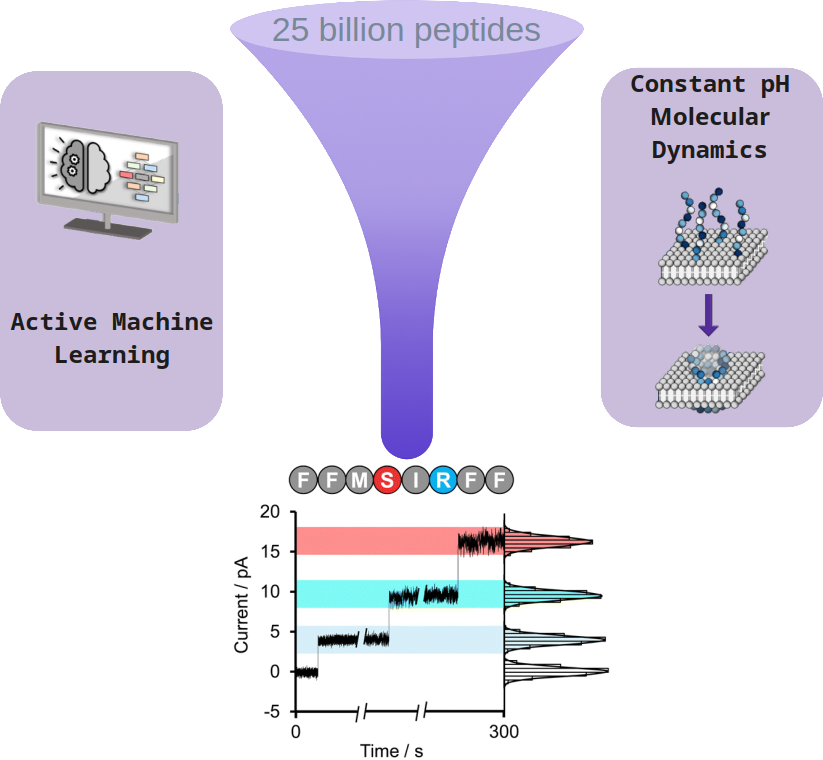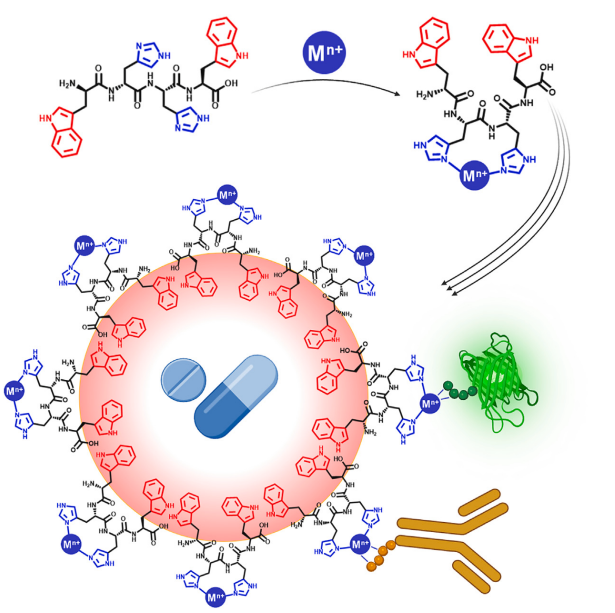publications.
Breakthrough in Soft Tissue Regeneration
In collaboration with the Wuhan Union Hospital and Huazhong University of Science and Technology we have pioneered a groundbreaking method to repair damaged collagen (the body’s most abundant structural protein) using a custom designed modified ultra-short peptide.
This peptide amphiphile works like a molecular scaffold, guiding broken collagen fragments back into their natural triple-helix form. When combined with nanofat (a stem-cell-rich extract from fat tissue), it creates a robust, bioactive gel that not only restores structure but actively promotes healing.
This material can be 3D printed into precision scaffolds that mimic the body’s own extracellular matrix, supporting cell growth, blood vessel formation, and natural tissue regeneration.
In preclinical models, it out performed traditional fillers by achieving lasting volume restoration, seamless tissue integration and coordinated regrowth of fat and blood vessels bringing us closer to truly regenerative, scar-free repair of soft tissue defects.
Pore forming peptides
Our latest research published in Physical Chemistry Chemical Physics reveals how we've leveraged active machine learning and constant pH coarse-grained molecular dynamics (CpHMD) to discover the first unmodified ultra-short peptides capable of forming stable membrane pores.
Our methodology efficiently navigated the vast 25.6 billion octapeptide sequence space to identify candidates with remarkable membrane-disrupting capabilities. Unlike previous approaches that rely on existing PFP databases, our algorithm learned iteratively through simulation feedback without prior assumptions.
The key innovation lies in our implementation of constant pH molecular dynamics simulations, which accurately capture the critical protonation state changes as peptides transition from aqueous environments into lipid bilayers. This pH-responsive modeling proved essential for reliable predictions, as standard simulations without pH considerations produced false positives.
All 13 lab-tested peptides behaved exactly as our simulations predicted:
11 peptides demonstrated the predicted membrane-disrupting ability
1 peptide formed highly stable, discrete pores with measurable conductance
2 negative controls showed no membrane disruption, confirming prediction specificity
Most significantly, we identified FFMSIRFF as the first ultra-short (8-residue) unmodified gene-encoded peptide capable of forming stable membrane channels, validated through planar lipid bilayer recordings that showed discrete conductance steps matching our computational models.
pH dynamics
pH fundamentally influences molecular behavior across biotechnology, biomaterials, and pharmaceutical applications. Our work with constant pH molecular dynamics simulations reveals how pH drives critical biological functions that static models fail to capture.
In pharmaceutical development, drug bioavailability, binding affinities, and degradation pathways all depend on pH-mediated charge states. Targeted delivery systems can leverage the acidic tumor microenvironment for selective drug release, but requires accurate pH modeling to design effectively.
Biotechnology processes benefit similarly from constant pH simulations through optimised enzyme activity, improved protein formulation stability, and enhanced biomaterial stability. The ability to model protonation state changes in complex environments leads to more efficient and precise bioprocesses.
By implementing advanced constant pH methodologies, we bridge computational prediction and experimental reality, enabling smarter materials and more effective therapeutics that respond intelligently to their biological environments.
Peptide-stabilized drug delivery emulsions
Effective drug delivery systems are critical for improving therapeutic outcomes while minimizing side effects. A key challenge lies in combining both hydrophobic and hydrophilic molecules as conventional emulsions typically accommodate only one type of compound. Additionally, achieving selective drug release at disease sites - such as tumors with their acidic microenvironment - remains an ongoing pursuit in pharmaceutical science.
This study introduces an innovative approach using metal-binding peptides to create switchable emulsions that address these limitations. The system leverages a short peptide sequence (WHHW, Trp-His-His-Trp) that undergoes a structural transformation when bound to metal ions like Zn²⁺ or Cu²⁺. This change enables the peptide to stabilize oil-in-water emulsions capable of co-encapsulating diverse therapeutic agents.
This drug delivery system simultaneously carries hydrophobic drugs (paclitaxel) in the oil phase and hydrophilic compounds (metal ions with the potential to include other biomolecules) at the droplet interface
The histidine-metal coordination breaks down at acidic pH (6.2–6.9), triggering selective drug release in tumor microenvironments.
Emulsion droplets can be functionalised with proteins, antibodies, or imaging agents via histidine tags bound to surface metal ions.




